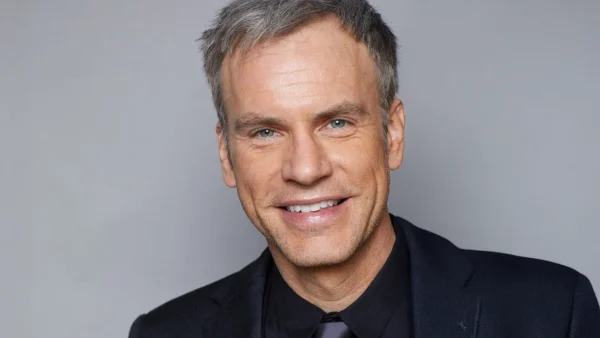Ken Lally: Precision Villainy, Perfect Timing, and a Pair of Very Dangerous Hands
Some actors announce themselves with speeches. Ken Lally preferred velocity. A classically trained performer and martial artist with a fencer’s economy of movement, Lally spent two decades slipping between live-action and video games, from network dramas and sci-fi one-offs to AAA franchises where his voice and motion capture helped define how modern villains move, breathe, and smirk. He was the kind of actor who could make a single line feel like a blade being sheathed—clean, deliberate, final. (For a broad, authoritative roll-up of credits, see his IMDb filmography.)
Stage Bones, Screen Instincts
Lally’s on-camera appearances zig through genre TV and film—security details, agents, soldiers, the reliable faces who make a world feel real before the special effects arrive. The through-line is physical control. He moved like someone who could actually do the thing he was pretending to do, because often, he could. That same control carried into voice booths and performance-capture volumes, where his timing and diction turned combat barks into music and exposition into momentum.
Resident Evil: Wearing the Sunglasses (in the Volume), Saving the Shop (in the Booth)
Lally’s most famous imprint on Capcom’s universe arrives in two very different guises. First: the sleek, lethal silhouette of Albert Wesker in Resident Evil 5 (2009), where Lally provided the motion capture for cutscene production—a crucial task that gave the series’ signature antagonist a crisp, predatory physical language in the HD era. Years later, he returned to Raccoon City as the voice of gun-store owner Robert Kendo in the acclaimed remakes—Resident Evil 2 (2019) and Resident Evil 3 (2020)—delivering a small, aching human story inside a franchise famous for operatic chaos.
Mortal Kombat (2011): Three Ways to Be Terrifying
If you want a handy summary of Lally’s range, consider NetherRealm’s 2011 reboot of Mortal Kombat, where he voiced three characters with utterly different energies: the stealthy specter Smoke, the four-armed bruiser Goro, and the arch sorcerer Shinnok. One actor; three distinct threats. It’s an ensemble within a single throat—breath, placement, and rhythm used like switches to snap from agile menace to mythic bellow to patient, poisonous intellect.
Action, History, and Alternate Histories: The Shooter Corridor
Lally’s voice and performance-capture résumé reads like a tour of modern action game design. He contributed to id/MachineGames’ alt-history blitz in Wolfenstein: The New Order and Wolfenstein II: The New Colossus; to the criminal sprawl of Mafia III; to the futuristic militarism of Call of Duty: Black Ops II; to the steampunk-cinematic ambitions of The Order: 1886; to the gonzo frontier of Red Dead Redemption; and to the reality-splitting pageantry of BioShock Infinite. These aren’t just logos on a list: they’re case studies in how a sharply delivered line can cut through noise and still land with character.
The Trek Stop: A Uniform, a Corridor, a Moment
Like many working actors with action chops, Lally crossed the Star Trek threshold, appearing as an Enterprise security crewman in the third season—brief, grounded beats that connect the operatic to the believable. It’s the kind of credit fans remember because he played it straight and let the costume do the shouting.
How He Sounded: A Craftsman’s Blueprint
Listen closely and the method reveals itself. Lally keeps consonants tight and rides the breath low, so even when he’s pushing volume he never frays into noise. He uses micro-pauses like punctuation you can feel—half-beats before key nouns or verbs that make a line sit heavier than it reads on paper. In games, that discipline means the player hears the whole thought even while the world explodes; in television, it reads as authority without theatrics.
How He Moved: The Language of Stillness
Performance capture punishes indecision; cameras see everything. Lally’s mocap as Wesker is a lesson in efficient physical storytelling—chin low, shoulders relaxed but ready, the feline cadence of someone who never wastes a step. It’s not the movement of a cartoon villain; it’s the body of a patient hunter. That posture became part of how players understand the character, just as surely as dialogue or costume ever did.
Why Directors Kept Calling
Reliability. Musicality. And an unusual ability to be specific. Lally could differentiate characters not just by tone but by worldview. Smoke breathes like a man who expects to be gone in a puff; Goro lands phrases like hammer blows; Kendo speaks like a father whose bravado is about to break. Those choices do more than entertain; they make worlds feel populated by people, not placeholders.
The Working Actor’s Arc
It’s tempting to define careers by marquee roles, but Lally’s arc is the kind you see when you look across the whole dashboard: a constant interplay of utility and flair. He’d do “additional voices” with the same care he’d bring to a named antagonist, because both jobs serve the same master—clarity in service of story. It’s why his name threads through so many credits lists: if you needed someone to make your line sound like a decision, you called him.
Colleagues, Communities, and the Day the News Hit
When Lally died in 2023 at 52, the note traveled fast through gaming and voice-acting circles. Tributes surfaced from actors, developers, and communities across franchises he’d touched—Resident Evil, Mortal Kombat, and beyond. The common theme wasn’t just talent; it was generosity, professionalism, and the sense that he made other people’s work better simply by showing up prepared and present.
A Short Roll of Highlights (Carefully Verified)
- Resident Evil 5 — performance capture for Albert Wesker (cutscene production), helping codify Wesker’s modern physicality.
- Resident Evil 2 (2019) and Resident Evil 3 (2020) — English voice of Robert Kendo, bringing unexpected pathos to a franchise staple.
- Mortal Kombat (2011) — voiced Smoke, Goro, and Shinnok in the series’ stylish reboot.
- Wolfenstein: The New Order and Wolfenstein II: The New Colossus — credited roles in MachineGames’ acclaimed shooters.
- Mafia III, Call of Duty: Black Ops II, The Order: 1886, BioShock Infinite, Red Dead Redemption — additional voice/performance credits across flagship titles.
The Measure of the Work
Actors like Lally often become more visible after the fact—when fans connect dots between roles and realize the same voice, the same intent, had been guiding them through different worlds for years. That’s the mark of a craftsperson: the work comes first, anonymity is part of the magic, and the result is a body of performances that feel inevitable in hindsight. You don’t wonder why a line landed; you wonder how the game ever worked without it.
What Remains
Scroll those credits again and a pattern emerges: the moments that slow time. A threat that sounds calm enough to be credible. A plea that doesn’t beg. A villain who doesn’t have to shout. Ken Lally’s legacy is built from moments like that—choices so precise you don’t notice the effort, only the effect. That’s not just good acting; that’s professional grace.
Explore more roles and appearances here: Ken Lally — IMDb.









